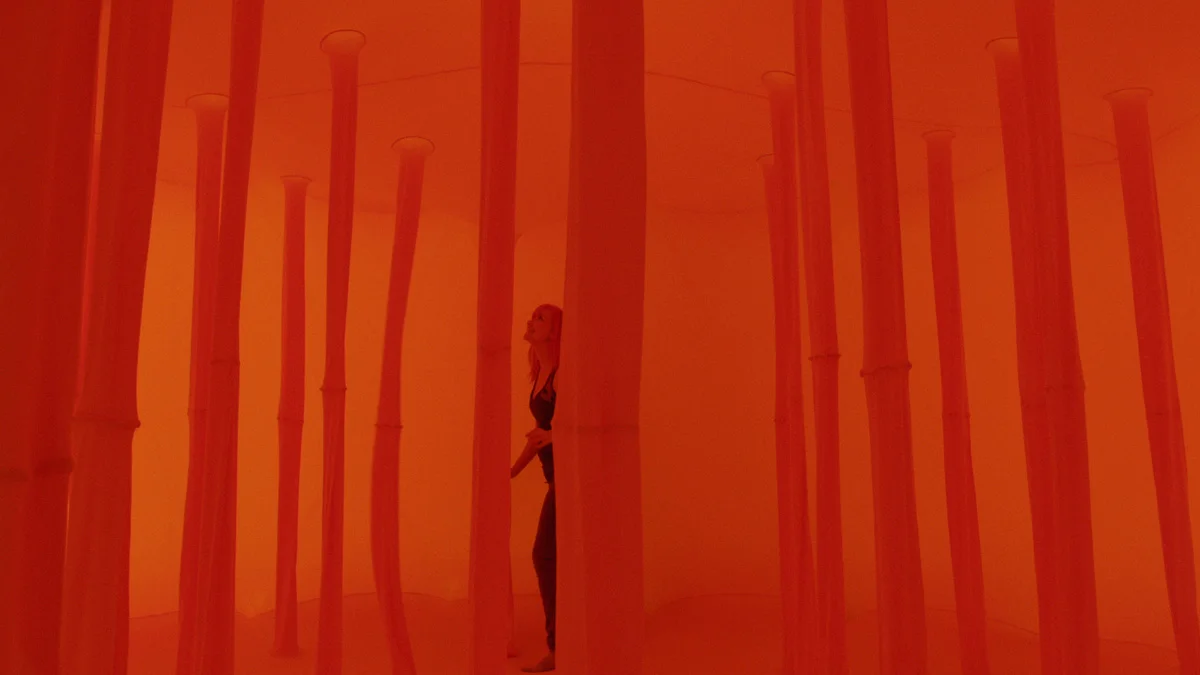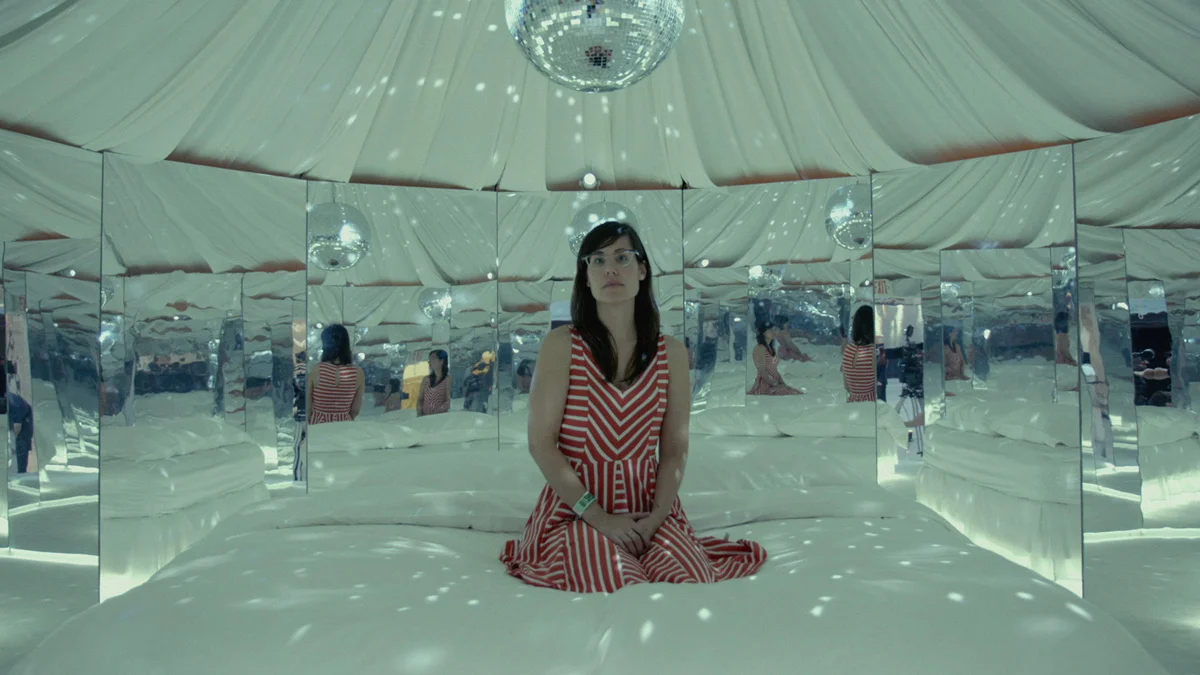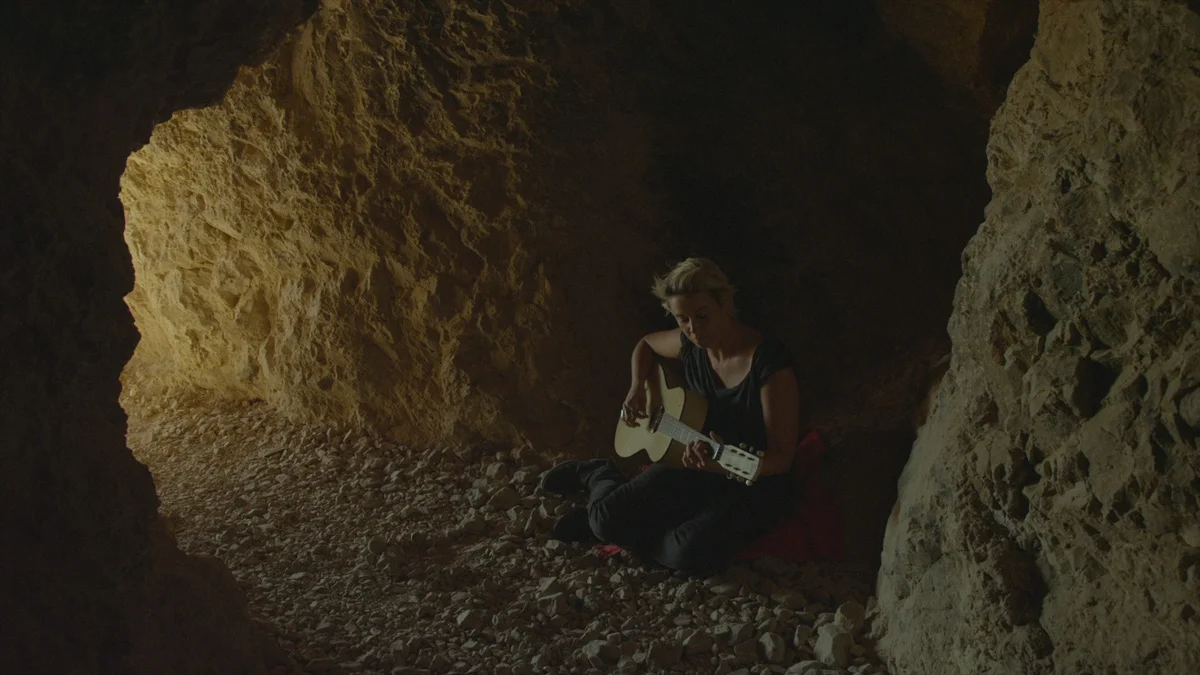

Still From Station to Station (2015). 71 Minutes. Courtesy Doug Aitken.

Still From Station to Station (2015). 71 Minutes. Courtesy Doug Aitken.

Still From Station to Station (2015). 71 Minutes. Courtesy Doug Aitken.
[](#)[](#)
Doug Aitken
The Only Artist He Hasn’t Worked With Is Clay Aiken
Expressing the classification of artist Doug Aitken becomes impossible as his works invite all classifications of expression. With work ranging from photography, print media, sculpture, and architectural interventions, to narrative films, sound, single, and multi-channel video works, installations and live performance, he might be the 21st century Conceptual Era’s neo-renaissance man, maybe a—universalist. His most impressive feats reach for, and surpass, the limits of phenomenology itself.
Take for instance 2015’s _Station to Station_ (the film in 62 segments), which reflects the effects of 2013’s Station to Station (the “happening”). The nomadic, collaborative Station to Station first occurred on a transcontinental train functioning as a moving platform for artistic experimentation that stopped in cities, towns, and remote locations across America. At every stop, artwork and musical performances were rotated. From New York City to San Francisco, the train made a total of nine stops at train stations across the country.
Dreamt up and realized by the 47-year-old artist, this spectacular coalescence—designed to invoke “art talk”—is itself a reaction to the grandiosity it posits. The inside-outside event—supported by MoMA PS1, Carnegie Museum of Art, MCA Chicago, Walker Art Center, SITE Santa Fe, LACMA and other respected institutions—will use proceeds to fund multi-museum arts programs. Here, the idea of self-production and consumption emerges. In the vein of multiverse theorists, Aitken’s project might be imagined as then swallowing its own Wikipedia tail. The list of artists involved with Station to Station 2013 include Kenneth Anger, Olaf Breuning, Peter Coffin, Thomas Demand, Urs Fischer, Meschac Gaba, Liz Glynn, Fischli & Weiss, Fritz Haeg, Carsten Höller, Olafur Eliasson, Christian Jankowski, Aaron Koblin, Ernesto Neto, Nam June Paik, Jorge Pardo, Jack Pierson, Nicolas Provost, Stephen Shore, Rirkrit Tiravanija, and Lawrence Weiner. Musicians included Beck, The Black Monks of Mississippi, Boredoms, Jackson Browne, Cat Power, Cold Cave, The Congos, Dan Deacon, Eleanor Friedberger, The Handsome Family, Lia Ices, Kansas City Marching Cobras, Lucky Dragons, Thurston Moore, Giorgio Moroder, Nite Jewel, No Age, Patti Smith, Ariel Pink’s Haunted Graffiti, Savages, Mavis Staples, Suicide, Sun Araw, THEESatisfaction, Twin Shadow and more. Printed matter contributors included Taylor-Ruth Baldwin, Yto Barrada, Sam Durant, Karen Kilimnik, Urs Fischer, Catherine Opie, Jack Pierson, Raymond Pettibon, and Josh Smith. Alice Waters and the Edible Schoolyard Project and chef Leif Hedendal provided food.
This summer, Station to Station set up shop in London at the Barbican, hosting a rotating cast of artists including Urs Fischer, Martin Creed, and several dance groups, all creating work on-site throughout the (again) 30-day duration—a static, spatially condensed juxtaposition to the sprawling kinesis of its counterpart.
Today, though, Doug Aitken talks to us from his studio in Venice Beach. No other artists are present.
#### _Where did your idea for Station to Station come from?_
The idea of something that was nomadic and transformative and something that, ignoring capitalist culture, looking more at the idea of artist-driven projects that aren’t made to be in a commercial gallery or in the music industry or in commercial cinema. And yeah, I never thought of a train at all—I just thought, what’s a way where I could have a nomadic platform and then I thought about this idea that there’s this whole strange structure out there, this archaic structure, they’re like veins in the arm, they’re kind of traversing the landscape, and if we could tap into that we could have access to a landscape that’s at times very forgotten.
#### _How did London’s Station to Station contrast with North America’s?_
I saw them as diametrically opposite—Station to Station in North America was this long vast road trip and in London it was about the idea of constant turnaround—you’re on this road trip through ideas, but it’s just in one place, it’s just completely churning, it’s like a turbine. It just keeps moving and you walk in, you know, one hour or one day or one week and it’s going to be different. I wanted people to make real works with content, but I wanted the overlap to be very accelerated and for it to really be about process.
I think that Station to Station London was very much about the idea of process. You would have people like Martin Creed putting together a band inside the space over five days and creating songs and rehearsing them everyday and then playing them and then gone. I mean after five days, Martin was gone, he’s on his folding bicycle with his hat and mustache just riding away from Barbican and someone else is showing up.
It was unique in London and it was controversial in some ways; a lot of people don’t want to see things being made, they don’t want to see music being created from nothing and they don’t want to see the process of an artwork being made. They want to see something that’s finished that they can judge, and I think that this project was very much the opposite of that.
The film is really this kind of dialogue, you know. I wanted it to be kind of fast and loose, and I wanted it to have parts and fragments of stories or sound bites or strange philosophies expressed, and to just have this piece of time, this thing that you could just give away and those ideas could just go out there—the film is just out there floating around and it can move on its own, and have its own life.
_Photographer_: Stefano Galli at StefanoGalli.com.
